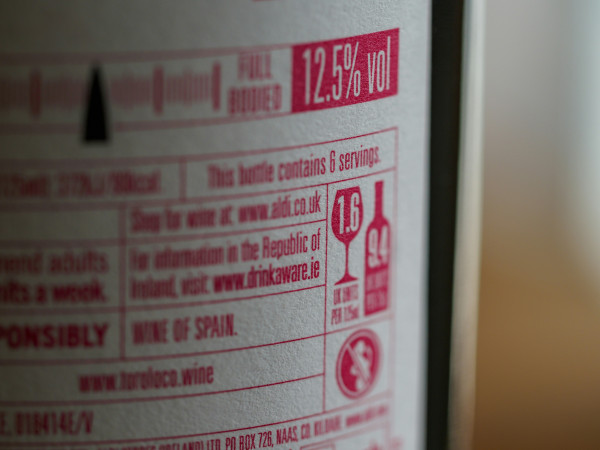
Fine Print Fiasco: How Misleading Food Labels Can Cost You
Why Labels Matter More Than Ever
In today’s food industry, whether for pet food or human food, labels are not just marketing tools; they’re promises to consumers. As transparency becomes a key factor in purchasing decisions, both regulatory bodies and consumers are demanding clearer, more accurate information. However, ensuring that every claim on a food label is truthful and compliant with regulations is no small feat.
This article will give some insights into the complexities of food labeling, from regulatory requirements to industry best practices, while also explaining how food manufacturers can build consumer trust through accurate and honest claims.
Regulatory Landscape: Who Governs Food Labels?
Before a company can place a claim on a product, they must navigate a web of regulations. Different governing bodies regulate labeling based on product type.
For human food:
- Food and Drug Administration (FDA): Regulates food labeling, including nutrition facts, ingredient lists, and health claims.
- United States Department of Agriculture (USDA): Oversees meat, poultry, and certain organic claims.
- Federal Trade Commission (FTC): Regulates marketing claims such as “Made in the USA” and ensures standardization of units or weight on packaging.
For pet food:
- Association of American Feed Control Officials (AAFCO): Sets ingredient definitions and labeling standards, although enforcement is state based. With the impending PURR Act of 2025, this may change soon.
- FDA Center for Veterinary Medicine (CVM): Ensures the safety of pet food and oversees drug-related claims. They are the scientific reviewing body for the FDA, evaluating safety testing data submitted by ingredient companies to approve new animal feed additives.
Navigating these regulations requires a strong compliance program to avoid misleading statements, recalls, or legal and regulatory actions.

Photo by Cottonbro Studio
Common Label Example of Claims & Their Front-Facing Challenges
Many food manufacturers aim to highlight the benefits of their products, but every claim must be supported by scientific evidence and regulatory approval. Some of the most common claims include:
- "Natural"
- While widely claimed, its meaning can be vague. It is not well defined, and in many circumstances, legally it does not necessarily mean that all ingredients in the product will be natural.
- For human food: The FDA has no formal definition, which could lead to potential lawsuits over misleading uses. The USDA has some guidance regarding various qualifying processes but does not strictly enforce this unless ingredients are clearly synthetic.
- For pet food: AAFCO defines "natural" as minimally processed without artificial ingredients, making enforcement clearer than in human food. While they have good processing guidelines, there are various exceptions regarding labeling.
- "Grain-Free" & "High-Protein"
- These claims have led to scrutiny, particularly in pet food, where grain-free diets came under fire during the DCM scandal that started in 2018. Additionally, it is challenging for brands to anticipate specific animal needs due to the vast variety of breeds, activity levels, and consumption patterns.
- A more effective claim might be “High in Protein” or “Good Source of Protein.”
- Manufacturers must ensure these claims have been tested to demonstrate accuracy and not be misleading.
- "Organic" & "Non-GMO"
- For human food: USDA strictly regulates organic labeling.
- For pet food: Organic labeling adheres to USDA’s National Organic Program (NOP) but is less common due to the complexity of sourcing organic ingredients.
- "Made in the USA"
- A highly scrutinized claim which requires that all significant processing occurs in the U.S. Confusion and variation arise in how different states define “significant.” Does that mean all, 95%, 90%, or something else entirely?
- Companies must ensure that ingredient sourcing and production comply with FTC requirements to avoid misleading consumers.
- "Veterinarian Recommended" or "Clinically Proven"
- These claims require documented evidence, such as clinical trials or expert consensus.
- Consensus is not simply one or five people; it is a statistically significant sample of experts in each area, or perhaps a peer-reviewed scientific publication demonstrating how the claim was clinically proven.
- Without evidence, companies risk violating advertising laws and FDA regulations.
- “Human Grade”
- Within AAFCO, there are guidelines for the use of this claim; however, even in human food, mistakes occur, so there is no guarantee that this food is any less subject to potential pathogens, foreign materials, or risks of cross-contamination.
- Human grade primarily refers to the standards governing ingredients and manufacturing processes, rather than the wholesomeness of the product.
The Risks of Misleading Claims
Mislabeling can lead to serious consequences, including:
- Regulatory fines and enforcement actions
- The FDA and USDA regularly issue warning letters and penalties for misleading claims.
- AAFCO and state agencies can prohibit the sale of non-compliant pet food in one or more states.
- Consumer backlash and lawsuits
- Misleading claims often result in class-action lawsuits.
- Social media amplifies consumer complaints, damaging brand reputation.
- Product recalls: Incorrect claims, such as undeclared allergens and false nutritional information, can force recalls that cost companies millions.

Photo by Brett Jordan
Best Practices for Ensuring Truth in Labeling
To maintain compliance and consumer trust, food manufacturers should implement a strong label verification program. Here’s how:
- Conduct thorough regulatory reviews
- Work closely with legal and regulatory experts to evaluate all claims.
- Stay informed about changes in labeling laws at both state and federal levels.
- Back claims with science & documentation
- Nutritional claims must be based on laboratory analysis.
- Health claims require clinical studies or scientific literature.
- Establish internal label approval and control processes
- Develop a checklist to verify ingredients, processing claims, and legal compliance before printing labels.
- Train teams to recognize potential red flags in marketing language.
- Verify that the correct labels are used on the correct products during production.
- Keep unused labels away from production lines to prevent mistakes and store them in a controlled area when not in use.
- Use third-party certifications where applicable
- Certifications such as USDA Organic or Non-GMO Project, enhance credibility.
- However, ensure all certification requirements are met before displaying logos.
- Conduct regular label audits
- Periodically review labels for compliance with evolving regulations.
- Check for consistency among labels, website descriptions, and marketing materials.
- Check formulas against the label to ensure that ingredients have remained the same or that formula tweaks have not changed key nutritional information on the label.
The Future of Food Labeling: Transparency & Technology
Consumers are demanding more than compliance; they want radical transparency. It’s all about how we get consumers to trust a brand’s claims on the label. Emerging trends include:
- QR codes linking to sourcing & production details.
- Blockchain for ingredient traceability.
- AI-powered compliance monitoring to detect errors before labels go to print.
Food companies that embrace these innovations will stand out in an increasingly competitive market.
Labels as a Competitive Advantage
Rather than viewing labeling regulations as hurdles, food manufacturers should see them as opportunities to build trust with consumers. Clear, honest, and compliant labels strengthen brand reputation, ensure product integrity, and ultimately drive sales. By committing to truth in labeling, food and pet food companies can navigate regulatory challenges while maintaining strong consumer loyalty.
Would you like additional insights? BSM Partners’ FSQAR team has the experience and knowledge to tell you what it will take to substantiate and defend any labeling claim.
Follow us on LinkedIn for the latest updates on all things happening here at BSM Partners.
About the Author
August Konie has been a Food Safety, Quality and Regulatory Professional for over 30 years. He was worked in many sectors of the food industry including fisheries, beverages, poultry, pork and pet food, under both FDA and USDA regulatory oversight. As an active committee member in various trade organization for food and pet food organizations, he was successful of implementing new regulatory guidance. He has worked with various teams across Asian, Europe, North and South American on various food safety, quality and import/export concerns. He currently serves as the Principal of BSM Assurance overseeing FSQAR activities at BSM Partners.
This content is the property of BSM Partners. Reproduction or retransmission or repurposing of any portion of this content is expressly prohibited without the approval of BSM Partners and is governed by the terms and conditions explained here.